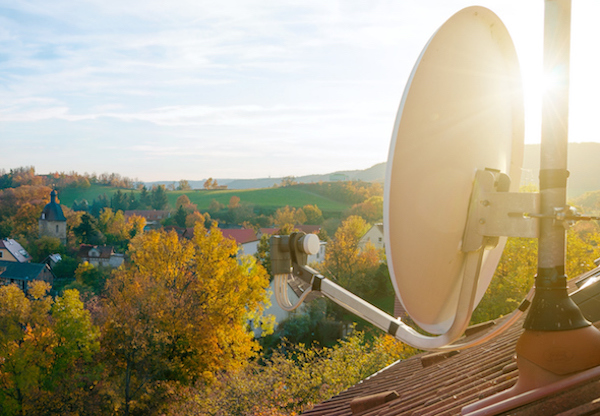Why do we pick Ecobee over Nest?
Ecobee SmartThermostat vs. Nest Learning Thermostat Review
The top two contenders in the smart thermostat world are usually Ecobee and Nest.
Both companies create solid products with remote sensors for extra reach. But in terms of features and automation, there are some tremendous differences. Ecobee has more automation than Nest, while Nest is more responsive.
Read on to learn more about why we usually recommend Ecobee over Nest.
In this review, we’re focusing on the Ecobee SmartThermostat (also known as the Ecobee5) and the Nest Learning Thermostat 3rd Generation. Ecobee has since come out with the Ecobee Smart Thermostat Premium, and Nest has produced the Nest Thermostat.
Ecobee pros and cons
Nest pros and cons
Ecobee vs. Nest: Prices
These thermostats are pretty close on price.
The Nest Learning Thermostat has a higher cost for the thermostat itself, but otherwise, you’re looking at similar expenses. Neither of these thermostats requires subscription services, and for a similar price you can get up to three sensors with both.
Data effective 09/26/2022. Offers subject to change.
Also, with Ecobee, the price includes one remote smart sensor. With Nest, you have to pay extra to get a thermostat-and-sensor bundle.
Either way, these thermostats cost way more than a traditional thermostat. It’s even a little up there for a smart thermostat, but since these were the best on the market when they first came out, the higher cost makes sense.
If you don’t want to pay so much for your thermostat, you can get either an Ecobee or Nest thermostat version that costs less. The trade-off is that these versions are feature-slim. But if you don’t care about the fancy stuff, either of these is a great smart thermostat option. They’ll get you to your desired temperature with no problem.
Ecobee vs. Nest: Equipment
The Ecobee SmartThermostat is unusual-looking (think astronaut helmet), but it’s a fun vibe that works in most modern homes. The screen is also big enough to feature multiple data points at once.
As we mentioned, your Ecobee SmartThermostat comes with one remote sensor. This sensor tracks the temperature in the room where it’s placed. It then relays that info back to the thermostat for temperature adjustments. (It doesn’t track humidity, but the central thermostat does.)
Your Ecobee SmartThermostat remote sensor also looks for human movement. When it detects your location, it tells the central thermostat to keep that room at the preferred temperature (as preset by you).
(For more information about how motion sensors like these work, check out our motion sensor guide.)
In contrast, the Nest thermostat is small and unobtrusive-looking. With its sleek look and choice of outer twist ring, a Nest Learning is a step up from past thermostats.
The only real downside is that it’s almost too tiny: all the info on the Ecobee screen won’t fit comfortably on this Nest device.
You can buy separate remote sensors for your Nest thermostat, too. These sensors work similarly to Ecobee’s. There’s just one problem.
Nest’s remote sensors can’t sense human movement. So, unlike Ecobee, Nest won’t track occupancy outside the room where the thermostat’s installed. You have to rely on geofencing.
Geofencing means changing or updating settings based on a phone’s proximity. For instance, if your Ecobee thermostat uses geofencing, it’ll switch from the Away temperature settings to the Home temperature settings when your phone draws close.
Like with Ecobee, the Nest remote sensors don’t sense humidity.
Installation
You can install both these thermostats on your own.
The Ecobee SmartThermostat and the Nest Learning Thermostat are both designed to be DIY. You can theoretically use their apps for a quick, easy, and guided installation process.
Remember that before installation, you have to remove your old thermostat. We strongly suggest that if you’re unfamiliar with your HVAC system, you get some professional help for that part at least. Damaging the HVAC system would be a huge (and expensive) hassle.
Ecobee’s thermostat requires a C-wire. If you don’t have one, you can get a special power extender kit.
If you don’t want to install the product yourself, Ecobee will help you find a professional.
The Nest Learning Thermostat doesn’t require a C-wire … at least that’s the company’s official stance. The thermostat is supposed to pull its power from existing wiring. In reality, many Learning Thermostat users end up having to tap into the C-wire.
Again, you can do this on your own. But Nest Pro will help you connect with a Nest installer if you’d like to go the professional route.
Ecobee vs. Nest: Features
Both Ecobee and Nest thermostats are full of features you won’t want to miss out on. But their strengths are almost exact opposites of each other.
Ecobee features
An Ecobee thermostat isn’t as smart as a Nest Learning Thermostat. It doesn’t track your schedule; you must manually input the settings.
Ecobee’s smartness comes in with its meticulous data tracking. The Ecobee Home IQ reports show exactly where you’re saving energy, making it easy to see the ROI. (The Nest thermostat also produces reports, but they aren’t as thorough or helpful.)
Ecobee does offer geofencing, but it’s not as sophisticated as Nest’s. Ecobee allows just one phone for geofencing. That’s pretty unhelpful when you consider how few people live alone.
Given a choice between the two, which matters more? We would say the occupancy sensors. Their motion detection senses visitors who aren’t attached to the account geofencing, making it an overall better method of determining if someone is home.
There is a workaround. You can use third-party apps to create that same geofencing for other members of your household. It just takes more effort on your part than native geofencing would.
Nest features
There’s a reason this is called a “learning thermostat.” The biggest advantage of the Nest Learning is its responsiveness. It’ll pick up on your schedule and adjust to meet your needs.
Nest also has a ton of different modes that can account and adjust for various factors. For instance, it has a feature called Sunblock that ignores direct sunlight on the thermostat when measuring the house temperature. It also has several different energy-saving settings you can use to lower your bill.
With Ecobee, you have to jury-rig geofencing for multiple people. But with Nest, you can add up to ten geofencing users directly to your Nest account.
Nest will track each of those ten people’s phones to know when the home is unoccupied. Then, to save you energy and money, the thermostat will temporarily raise or lower the temperature while everyone’s gone.
Ecobee vs. Nest: Smart home integrations
Ecobee has a ton of smart home compatibility. There’s even an Alexa speaker built right into the thermostat, so you don’t have to buy a separate Echo for voice control.
The Ecobee app works on both Android and Apple phones. And you can use it in your house and from far away. You're golden if you’re not at home but need to adjust the temperature for whatever reason.
Some functions take place on the thermostat itself, but generally, you need to open the app or use voice control.
Speaking of voice control, you can usually get it through a smart home setup. The Ecobee is compatible with the following major smart home hubs:
- Amazon Echo (Alexa)
- Google Home (Google Assistant)
- Google Nest Hub (Google Assistant)
- Apple HomeKit (Siri)
- Samsung SmartThings
- IFTTT
The Nest Learning Thermostat lags behind the Ecobee in automation. It has an equally good app but low smart home compatibility.
It also doesn’t have a smart speaker or smart hub built in, so you’ll need to buy one separately if you want voice control.
The Nest app is also well-rated and available on both Google Play and the Apple Store. Like with the Ecobee, you’ll lean heavily on the app for most thermostat functions. And you can use it any time, anywhere.
If you don’t want to keep running to your app, you can always make adjustments using a voice assistant. Unfortunately, your assistant options are much more limited with Nest than with Ecobee.
The Nest Learning Thermostat connects with Google Assistant, Amazon’s Alexa, and IFTTT. These options work with a lot of smart home setups—but not all of them.
Ecobee vs. Nest: Customer service
Neither Ecobee nor Nest is known for amazing customer service.
Ecobee has hardly any complaints on the BBB, but its resolution rate is poor. Nest has a high BBB rating, but it has tons and tons of complaints. That makes the two hard to compare. But when we get down to the nitty gritties, Nest is a little better.
Ecobee offers customer service assistance from 8 a.m. to 11 p.m. EST during the week and 9 to 9 on weekends. It also helps you find a professional near you to install your thermostat if you’re not about that DIY life.
Google Nest has 24/7 service. So if you’re burning the midnight oil when you set up your thermostat or your system has a problem in the middle of the night, you can get the help you need. Nest also offers professional installation for your thermostat.
- Ecobee customer service number: 1-877-932-6233
- Nest customer service number: 1-855-469-6378
Ecobee vs. Nest: Which is better?
We generally would pick the Ecobee over the Nest Learning Thermostat.
It’s a close one, but overall we think the Ecobee is a better choice.
However, if you love Google or Nest products or want the learning functions or the multiple-user geofencing, the Nest Learning Thermostat is a better choice for you.
- Prices: Ecobee. The Ecobee costs a bit less than the Nest Learning Thermostat.
- Equipment: Ecobee. The Ecobee thermostat comes with a remote sensor that checks for occupancy.
- Features: Tie. Both brands are filled with features you won’t want to miss, but they’re very different from each other.
- Smart home integrations: Ecobee. Ecobee has a built-in smart speaker and is compatible with more smart home assistants and protocols.
- Customer service: Nest. Overall, Nest has longer customer service hours and better reviews.
If you want a more in-depth assessment, check out our review of the best smart thermostats. You can also read our overview of the Alarm.com smart thermostat.
Data effective 09/26/2022. Offers subject to change.
Methodology
As we review smart thermostats, we keep a few criteria in mind, such as:
- Price
- Equipment
- Features
- Home automation
- Customer service
Whenever possible, we get our hands on the products. When that doesn’t happen, we do extensive research and check out as many customer reviews as possible, just to get a good idea of what’s going on.
Related articles
Can I add my thermostat to a home security setup?
Certain content that appears on this site comes from Amazon.com. This content is provided “as is” and is subject to change or removal at any time. Product prices and availability are accurate as of the date/time indicated and are subject to change. Any price and availability information displayed on Amazon.com at the time of purchase will apply to the purchase of this product. Reviews.org utilizes paid Amazon links.
Related Articles






